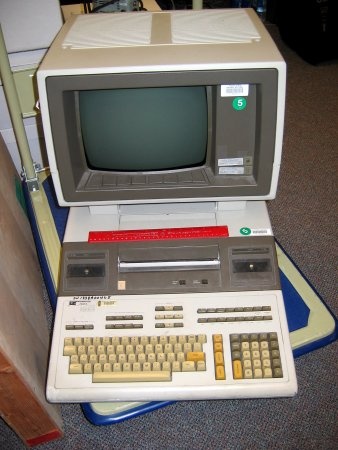...
| Div | |||||||||||||||
|---|---|---|---|---|---|---|---|---|---|---|---|---|---|---|---|
| |||||||||||||||
|
The P652 increased the capability for handling trigonometric and logarithmic calculations and came with a standard keyboard for common mathematical functions as well as a number of special keys for entering routines and programs. The built-in printer recorded the input data as well as the results of calculations on a roll of paper. Programs could be input directly on the keyboard, by means of a built-in magnetic card reader, or by a punched paper tape reader. A number of peripheral devices, which were sold separately, increased the utility of this microcomputer. These add-ons included: a typewriter; an auxiliary disk data storage unit; a cassette tape unit for data and program storage; and an X-Y flat bed plotter. Olivetti also made a software library of programs for various technical routines available to users. The P652 was widely used for collecting data from biomedical experiments and subjecting that data to statistical analysis; it was often listed in the footnotes of publications from that era as having been used to analyze experimental results.
This computer was used by Dr. Harry R. Keiser, Clinical Director of the National Heart, Lung, and Blood Institute from 1976–1998. His primary research focus was on the activity of signaling molecules in metabolic diseases. Keiser published over 200 articles in medical journals and textbooks, and received a lifetime service award from the Washington Academy of Sciences. [89.0001.013]
...
| Div | |||||||||||||||
|---|---|---|---|---|---|---|---|---|---|---|---|---|---|---|---|
| |||||||||||||||
|
The graphics screen was particularly important for search programs that relied on user-input chemical structural diagrams to search large collections of compounds held by the National Cancer Institute or the Chemical Abstracts Service database of compounds.
While the stand-alone computer could be used to perform intricate mathematical operations, statistical calculations, and other heavy calculation-dependent applications, it did not have any of the application programs, such as a word processor or spreadsheet manager, that now are basic in computers. While workstations in general have been replaced by true personal computers, many of the top-selling HP 9845-B units still exist and are still operational, attesting to the ruggedness of the computer design.
Dr. Louis Sokoloff, Laboratory of Cerebral Metabolism, National Institute of Mental Health, used this HP 9845-B in his work on the deoxyglucose method—a method for measuring local glucose metabolism in the brain, used as a measure of brain activity, which has been used as the basis for PET scans. For this contribution to science, he won the 1981 Lasker Award. He also wrote user-friendly programs for the HP-9845 to statistically analyze his data. [06.0006.001]
...
| Div | ||||||||||||||||
|---|---|---|---|---|---|---|---|---|---|---|---|---|---|---|---|---|
| ||||||||||||||||
|
Starting in 1979, the Tandy Corporation introduced a class of computers each designated as “TRS-80” with a suffix to indicate the model. They were sold through the Tandy-owned Radio Shack stores. The popular Model 100, introduced in March 1983, was actually a computer that Tandy licensed from Kyocera in Japan, where the machine had originally been designed and manufactured. Kyocera also licensed the design to Olivetti and NEC, each of whom went on to introduce proprietary versions of that machine. The TRS-80 Model 100 was wildly successful, selling over 6,000,000 units while it was in production, due to the ubiquity of Radio Shack stores. Bill Gates wrote the BASIC programming language available on the machine; it was the last version of BASIC in which he wrote the majority of the code.
This particular unit was used by Drs. Robert Highet and James V. Silverton of the National Heart, Lung, and Blood Institute. Highet and Silverton both studied the structure and function of various chemical compounds to determine if they were suitable to develop as drugs for treating diseases. [98.0016.001]
...




